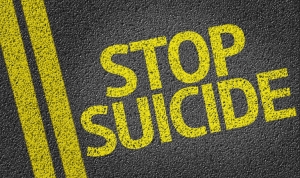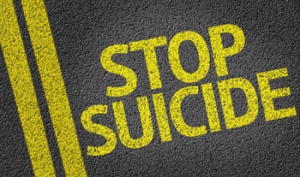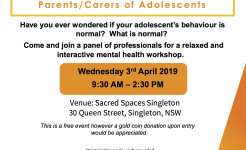Administrator
Suicide Research
Dunt Review into Suicide
Dunt Review Into Suicide
While there is evidence that military and similar institutionally-based ‘gatekeeper programs’ are effective (and may involve courses like ASIST in part), this is less true for communitybased programs.
Top Tips for Handling Combat PTSD at the Holidays
There is no shortage of triggers for veterans with combat posttraumatic stress disorder (PTSD) during the holidays. Loud noises, parties with crowds of people, the expectations of positive emotions and so many more things can make combat PTSD harder to live with during the holidays; and when everyone around you is having a great time, it can feel very lonely being the one who feels worse during the holiday celebrations. But there is hope. Use these tips to handle your PTSD during the holidays and maybe even have some fun.
Top Tips for Handling the Holidays with Combat PTSD
- Create the holiday that you want. Sometimes during the holidays a sense of control is forfeited as the holiday plans suddenly spring up around you. This lack of control can actually make PTSD symptoms (like anxiety) worse. To get back some of this control, plan the holiday that you want instead of something that Martha Stewart insists you should want. Go to the events that really appeal to you and plan experiences that don’t trigger you such as putting decorations on a tree at home with family rather than going to huge party. Set up new traditions that don’t trigger PTSD symptoms.
- Try to eliminate holiday stress. Holidays can create stress and one such stress is financial stress if you tend to overspend. Create a holiday budget and stick to it so you will have one less thing to worry about. Identify other stresses and put plans into place to address them.
- Tackle the reality of your PTSD head-on. So many families avoid talking about a veteran’s PTSD but I would recommend just the opposite. Sit down with your loved ones and talk about what might be triggering during the holidays and what could happen, and what is okay for you and what isn’t. Then everyone is on the same page and understands that you’re not being antisocial or rude by excusing yourself but, rather, you’re taking care of yourself.
- Create escape routes. During events that you choose to go to that may be triggering, make sure to plan an “out” ahead of time. For example, arrange to have someone call you after an hour, giving you an excuse to go. Or work out a code phrase with your spouse so that he or she knows when you need to leave.
- Do not drink or use drugs. Alcohol tends to be everywhere during the holidays and you may be tempted to drink – even if you don’t normally do so. But remember, drinking can cause a lack of judgement and a loss of control that may result in actions (such acting out in a rage) that you would not normally do. It’s best to keep control and stick to the virgin eggnog.
- Make sure the needs of others are also met. Or course, the needs of the veteran during the holidays aren’t the only needs – family, friends, and especially children of the veteran, must be taken into account too. When creating a safe, holiday plan for the person with PTSD, also make sure that others are not overlooked. For example, a spouse could stay at a Christmas party he or she is enjoying while the person with combat PTSD leaves for his or her own welfare. Or, perhaps, the spouse of the veteran could take the kids to the huge holiday parade while the veteran stays home and wraps gifts.
- Get the help you need. But even careful planning doesn’t always avoid the need for additional help during the holidays. Holiday stress can degrade a person’s mental health no matter what so plan on making an extra counselling (or other professional) appointment during the holidays.
- Give yourself permission to feel the way you feel.The fact is you might not feel as good as you used to. You might not feel the holiday merriment that other people expect you to or be able to express the emotions that others expect you to. This is okay and is likely part of your recovery journey. Know that it’s okay to feel and act differently than you did before combat.
Because even if holidays are tough, and they certainly can be, there are always bits and pieces that a person – even a person with combat PTSD – can enjoy. It may not be all the moments the veteran used to enjoy and the enjoyment level may not, at least initially, be the same, but some enjoyment can be had during this season if the veteran and his or her loved ones learn to make realistic plans and tackle the combat PTSD symptoms head-on.
And saying that, I wish you all happy holidays and the best in the coming year.
Taken from, Healthy Place America's Mental Health Channel
Strongyloides
What is Strongyloids?
Strongyloides stercoralis
is a nematode (roundworm) which occurs in many tropical (and a few temperate) countries.
Strongyloidiasis is the name given to the disease process, which results from infection with Strongyloides.
Mothers in the Middle East Area of Operations (MEAO): the health impacts of maternal deployment to an area of operations
Mothers in the Middle East Area of Operations (MEAO): the health impacts of maternal deployment to an area of operations.
FINAL REPORT
Authors:Ellie Lawrence-Wood, Laura Jones, Stephanie Hodson, Samantha Crompvoets, Alexander McFarlane, and Susan Neuhaus.
1.Executive summary
1.1 Background
Some international military research literature indicates that female veterans with dependent children may be at increased risk of negative health impacts of deployment, but that any increased risk may be offset by psychosocial factors including family and broader social supports. There is however a dearth of research, and a lack of consistent evidence, regarding the specific impacts of deployment for women with dependent children.
Camouflage Quilt Winner!!

Thank you to everyone who entered in our "Camouflage Quilt Raffle" the WINNER has been drawn.
Congratulations to Gary Burke of Fletcher NSW.
How traumatic memories hide in the brain, and how to retrieve them

Some stressful experiences -- such as chronic childhood abuse -- are so traumatic, the memories hide like a shadow in the brain and can't be consciously accessed. Eventually, suppressed memories can cause debilitating psychological problems. Scientists have discovered how and where the brain stores those stressful memories and how to retrieve them. The findings could lead to new treatment for patients with repressed traumatic memories.
Some stressful experiences -- such as chronic childhood abuse -- are so overwhelming and traumatic, the memories hide like a shadow in the brain.
At first, hidden memories that can't be consciously accessed may protect the individual from the emotional pain of recalling the event. But eventually those suppressed memories can cause debilitating psychological problems, such as anxiety, depression, post-traumatic stress disorder or dissociative disorders.
A process known as state-dependent learning is believed to contribute to the formation of memories that are inaccessible to normal consciousness. Thus, memories formed in a particular mood, arousal or drug-induced state can best be retrieved when the brain is back in that state.
In a new study with mice, Northwestern Medicine scientists have discovered for the first time the mechanism by which state-dependent learning renders stressful fear-related memories consciously inaccessible.
"The findings show there are multiple pathways to storage of fear-inducing memories, and we identified an important one for fear-related memories," said principal investigator Dr. Jelena Radulovic, the Dunbar Professor in Bipolar Disease at Northwestern University Feinberg School of Medicine. "This could eventually lead to new treatments for patients with psychiatric disorders for whom conscious access to their traumatic memories is needed if they are to recover."
It's difficult for therapists to help these patients, Radulovic said, because the patients themselves can't remember their traumatic experiences that are the root cause of their symptoms.
The best way to access the memories in this system is to return the brain to the same state of consciousness as when the memory was encoded, the study showed.
The study will be published August 17 in Nature Neuroscience.
Changing the Brain's Radio Frequencies
Two amino acids, glutamate and GABA, are the yin and yang of the brain, directing its emotional tides and controlling whether nerve cells are excited or inhibited (calm). Under normal conditions the system is balanced. But when we are hyper-aroused and vigilant, glutamate surges. Glutamate is also the primary chemical that helps store memories in our neuronal networks in a way that they are easy to remember.
GABA, on the other hand, calms us and helps us sleep, blocking the action of the excitable glutamate. The most commonly used tranquilizing drug, benzodiazepine, activates GABA receptors in our brains.
There are two kinds of GABA receptors. One kind, synaptic GABA receptors, works in tandem with glutamate receptors to balance the excitation of the brain in response to external events such as stress.
The other population, extra-synaptic GABA receptors, are independent agents. They ignore the peppy glutamate. Instead, their job is internally focused, adjusting brain waves and mental states according to the levels of internal chemicals, such as GABA, sex hormones and micro RNAs. Extra-synaptic GABA receptors change the brain's state to make us aroused, sleepy, alert, sedated, inebriated or even psychotic. However, Northwestern scientists discovered another critical role; these receptors also help encode memories of a fear-inducing event and then store them away, hidden from consciousness.
"The brain functions in different states, much like a radio operates at AM and FM frequency bands," Radulovic said. "It's as if the brain is normally tuned to FM stations to access memories, but needs to be tuned to AM stations to access subconscious memories. If a traumatic event occurs when these extra-synaptic GABA receptors are activated, the memory of this event cannot be accessed unless these receptors are activated once again, essentially tuning the brain into the AM stations."
Retrieving Stressful Memories in Mice
In the experiment, scientists infused the hippocampus of mice with gaboxadol, a drug that stimulates extra-synaptic GABA receptors. "It's like we got them a little inebriated, just enough to change their brain state," Radulovic said.
Then the mice were put in a box and given a brief, mild electric shock. When the mice were returned to the same box the next day, they moved about freely and weren't afraid, indicating they didn't recall the earlier shock in the space. However, when scientists put the mice back on the drug and returned them to the box, they froze, fearfully anticipating another shock.
"This establishes when the mice were returned to the same brain state created by the drug, they remembered the stressful experience of the shock," Radulovic said.
The experiment showed when the extra-synaptic GABA receptors were activated with the drug, they changed the way the stressful event was encoded. In the drug-induced state, the brain used completely different molecular pathways and neuronal circuits to store the memory.
"It's an entirely different system even at the genetic and molecular level than the one that encodes normal memories," said lead study author Vladimir Jovasevic, who worked on the study when he was a postdoctoral fellow in Radulovic's lab.
This different system is regulated by a small microRNA, miR-33, and may be the brain's protective mechanism when an experience is overwhelmingly stressful.
The findings imply that in response to traumatic stress, some individuals, instead of activating the glutamate system to store memories, activate the extra-synaptic GABA system and form inaccessible traumatic memories.
Traumatic Memories Rerouted and Hidden Away
Memories are usually stored in distributed brain networks including the cortex, and can thus be readily accessed to consciously remember an event. But when the mice were in a different brain state induced by gaboxadol, the stressful event primarily activated subcortical memory regions of the brain. The drug rerouted the processing of stress-related memories within the brain circuits so that they couldn't be consciously accessed.
Story Source:
The above post is reprinted from materials provided by Northwestern University. Note: Materials may be edited for content and length.
Journal Reference:
- Vladimir Jovasevic, Kevin A Corcoran, Katherine Leaderbrand, Naoki Yamawaki, Anita L Guedea, Helen J Chen, Gordon M G Shepherd, Jelena Radulovic. GABAergic mechanisms regulated by miR-33 encode state-dependent fear. Nature Neuroscience, 2015; DOI: 10.1038/nn.4084
How traumatic memories hide in the brain, and how to retrieve them
 Some stressful experiences -- such as chronic childhood abuse -- are so traumatic, the memories hide like a shadow in the brain and can't be consciously accessed. Eventually, suppressed memories can cause debilitating psychological problems. Scientists have discovered how and where the brain stores those stressful memories and how to retrieve them. The findings could lead to new treatment for patients with repressed traumatic memories.
Some stressful experiences -- such as chronic childhood abuse -- are so traumatic, the memories hide like a shadow in the brain and can't be consciously accessed. Eventually, suppressed memories can cause debilitating psychological problems. Scientists have discovered how and where the brain stores those stressful memories and how to retrieve them. The findings could lead to new treatment for patients with repressed traumatic memories.
Some stressful experiences -- such as chronic childhood abuse -- are so overwhelming and traumatic, the memories hide like a shadow in the brain.
At first, hidden memories that can't be consciously accessed may protect the individual from the emotional pain of recalling the event. But eventually those suppressed memories can cause debilitating psychological problems, such as anxiety, depression, post-traumatic stress disorder or dissociative disorders.
A process known as state-dependent learning is believed to contribute to the formation of memories that are inaccessible to normal consciousness. Thus, memories formed in a particular mood, arousal or drug-induced state can best be retrieved when the brain is back in that state.
In a new study with mice, Northwestern Medicine scientists have discovered for the first time the mechanism by which state-dependent learning renders stressful fear-related memories consciously inaccessible.
"The findings show there are multiple pathways to storage of fear-inducing memories, and we identified an important one for fear-related memories," said principal investigator Dr. Jelena Radulovic, the Dunbar Professor in Bipolar Disease at Northwestern University Feinberg School of Medicine. "This could eventually lead to new treatments for patients with psychiatric disorders for whom conscious access to their traumatic memories is needed if they are to recover."
It's difficult for therapists to help these patients, Radulovic said, because the patients themselves can't remember their traumatic experiences that are the root cause of their symptoms.
The best way to access the memories in this system is to return the brain to the same state of consciousness as when the memory was encoded, the study showed.
The study will be published August 17 in Nature Neuroscience.
Changing the Brain's Radio Frequencies
Two amino acids, glutamate and GABA, are the yin and yang of the brain, directing its emotional tides and controlling whether nerve cells are excited or inhibited (calm). Under normal conditions the system is balanced. But when we are hyper-aroused and vigilant, glutamate surges. Glutamate is also the primary chemical that helps store memories in our neuronal networks in a way that they are easy to remember.
GABA, on the other hand, calms us and helps us sleep, blocking the action of the excitable glutamate. The most commonly used tranquilizing drug, benzodiazepine, activates GABA receptors in our brains.
There are two kinds of GABA receptors. One kind, synaptic GABA receptors, works in tandem with glutamate receptors to balance the excitation of the brain in response to external events such as stress.
The other population, extra-synaptic GABA receptors, are independent agents. They ignore the peppy glutamate. Instead, their job is internally focused, adjusting brain waves and mental states according to the levels of internal chemicals, such as GABA, sex hormones and micro RNAs. Extra-synaptic GABA receptors change the brain's state to make us aroused, sleepy, alert, sedated, inebriated or even psychotic. However, Northwestern scientists discovered another critical role; these receptors also help encode memories of a fear-inducing event and then store them away, hidden from consciousness.
"The brain functions in different states, much like a radio operates at AM and FM frequency bands," Radulovic said. "It's as if the brain is normally tuned to FM stations to access memories, but needs to be tuned to AM stations to access subconscious memories. If a traumatic event occurs when these extra-synaptic GABA receptors are activated, the memory of this event cannot be accessed unless these receptors are activated once again, essentially tuning the brain into the AM stations."
Retrieving Stressful Memories in Mice
In the experiment, scientists infused the hippocampus of mice with gaboxadol, a drug that stimulates extra-synaptic GABA receptors. "It's like we got them a little inebriated, just enough to change their brain state," Radulovic said.
Then the mice were put in a box and given a brief, mild electric shock. When the mice were returned to the same box the next day, they moved about freely and weren't afraid, indicating they didn't recall the earlier shock in the space. However, when scientists put the mice back on the drug and returned them to the box, they froze, fearfully anticipating another shock.
"This establishes when the mice were returned to the same brain state created by the drug, they remembered the stressful experience of the shock," Radulovic said.
The experiment showed when the extra-synaptic GABA receptors were activated with the drug, they changed the way the stressful event was encoded. In the drug-induced state, the brain used completely different molecular pathways and neuronal circuits to store the memory.
"It's an entirely different system even at the genetic and molecular level than the one that encodes normal memories," said lead study author Vladimir Jovasevic, who worked on the study when he was a postdoctoral fellow in Radulovic's lab.
This different system is regulated by a small microRNA, miR-33, and may be the brain's protective mechanism when an experience is overwhelmingly stressful.
The findings imply that in response to traumatic stress, some individuals, instead of activating the glutamate system to store memories, activate the extra-synaptic GABA system and form inaccessible traumatic memories.
Traumatic Memories Rerouted and Hidden Away
Memories are usually stored in distributed brain networks including the cortex, and can thus be readily accessed to consciously remember an event. But when the mice were in a different brain state induced by gaboxadol, the stressful event primarily activated subcortical memory regions of the brain. The drug rerouted the processing of stress-related memories within the brain circuits so that they couldn't be consciously accessed.
Story Source:
The above post is reprinted from materials provided by Northwestern University. Note: Materials may be edited for content and length.
Journal Reference:
- Vladimir Jovasevic, Kevin A Corcoran, Katherine Leaderbrand, Naoki Yamawaki, Anita L Guedea, Helen J Chen, Gordon M G Shepherd, Jelena Radulovic. GABAergic mechanisms regulated by miR-33 encode state-dependent fear. Nature Neuroscience, 2015; DOI: 10.1038/nn.4084





















